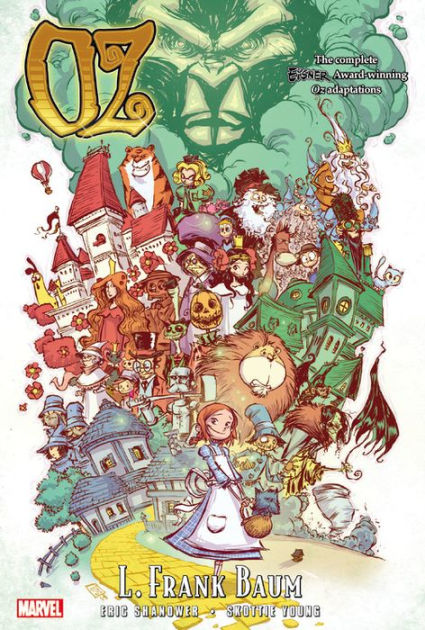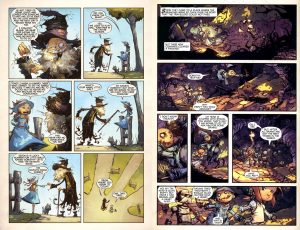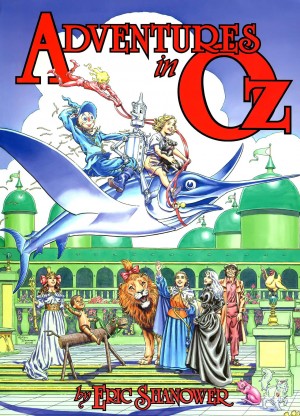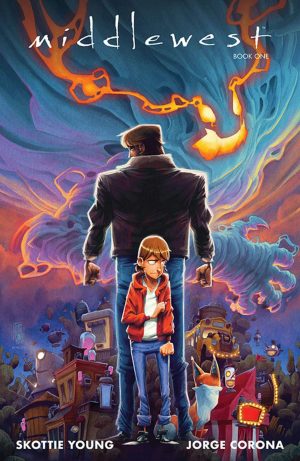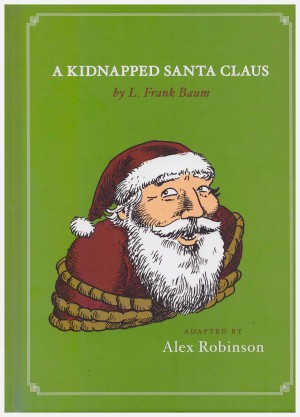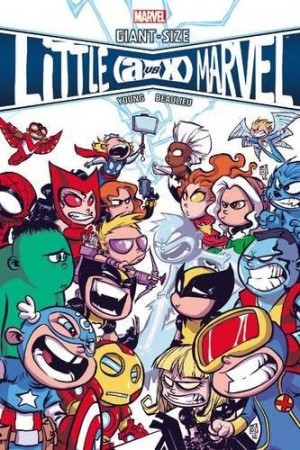Review by Frank Plowright
Between 1900 and 1918 L. Frank Baum wrote a dozen novels about the magical land of Oz, with a further two published after his death. They’ve delighted people ever since, as has the 1939 film version of the first, which has probably done more to imprint the cast in peoples’ minds. However, Baum intended The Wonderful Wizard of Oz as a standalone story, and it was only four years later that he succumbed to pressure from readers and publisher to produce a sequel. The sixth book, The Emerald City of Oz, was intended to bring the series to a close, but demand again changed Baum’s mind.
It’s those first six books adapted in this collection by Eric Shanower with Skottie Young providing the art. There’s a case to be made that despite Shanower having to contract and re-arrange the stories to successfully transfer them to comics, his versions actually read better than the original books. Baum had a phenomenal imagination, creating characters that still amaze, but he wasn’t a great writer, and his plots were slim, frequently dependent on convenient after the fact revelations. Shanower more smoothly incorporates the necessary elements, and every one of these stories reads well, although there’s less meandering in the later adaptations, which occupy five and six chapters instead of eight.
A prime selling point of the oversized Omnibus format is the larger presentation of the art, and Young’s work really shines. He’s looked at the original book illustrations, and completely redesigned the cast to very good effect, giving them a looser, more modern look while remaining true to their original intentions. Exemplifying his first rate design is the Shaggy Man, seen on the sample art, previously eccentric, now genuinely deranged, but without being threatening. After a Wicked Witch in the opening story perhaps too scary for the youngest readers, Young adapts to keeping the threat level appropriate to the intended readership, designing a Nome King or Phantasms of Phantastico who provide a slight shiver of fright, but not full nightmares. He delivers comedy when it’s appropriate, and draws great landscapes, with the colouring of Jean-François Beaulieu important to the overall look.
The first story will be the most familiar as it was faithfully adapted for the film, which rightly dropped a rambling ending that is present here. Although the methods for returning Dorothy to Oz become ever more contrived, and regularly feature a long journey, the compensation is the succession of new characters introduced. Each is exquisitely crafted by Young, down to Bettina the hen, and one can only imagine how far ahead of his time Baum was in letting his imagination run free back in the day.
This is a luxury presentation with a price to match, so perhaps a special occasion present rather than everyday purchase for your child, but they’ll be as enthralled as young readers of the early 20th century by the magic Shanower and Young bring to Baum’s creativity.
Anyone just wanting to sample instead can find the original paperbacks The Wonderful Wizard of Oz, The Marvelous Land of Oz, Ozma of Oz, Dorothy and the Wizard in Oz, Road to Oz and The Emerald City of Oz. They’re also combined two stories to a smaller format paperback titled The Complete Collection.
